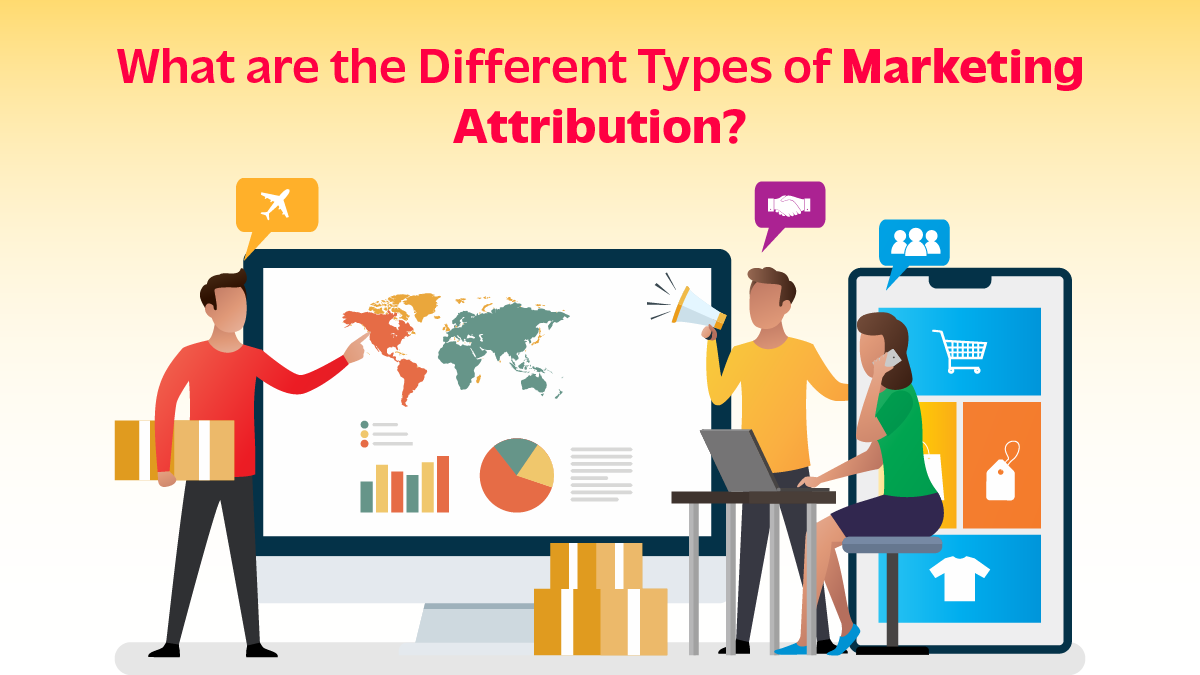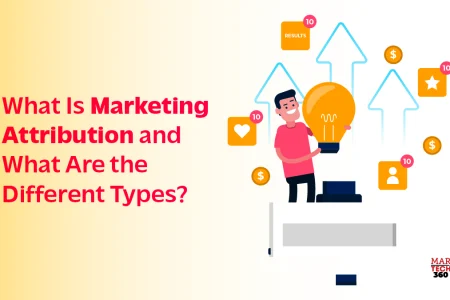In today’s complex marketing landscape, businesses face the challenge of understanding the impact of their marketing efforts on customer behavior and conversions. This is where marketing attribution comes in handy. Marketing attribution is the process of assessing the various touchpoints a customer encounters before making a purchase or performing a desired action. According to reports, 52% of marketers use attribution reporting. Let’s understand the hype behind this.
What is Marketing Attribution?
Marketing attribution is the process of assessing the marketing touchpoints a customer experiences before making a purchase. Determining which messages and channels influenced the decision to convert or perform the intended next action is the aim of attribution. Marketers today employ several well-liked attribution models, including time decay, lift studies, multi-touch attribution models, B2B marketing attribution, and more.
Marketing teams may adapt and tailor campaigns to match the unique needs of individual customers by using the information these models provide about the how, where, and when of consumer interactions with brand messages. This improves marketing return on investment (ROI).
Businesses may identify which channels and messaging are most successful in achieving their goals by assigning credit to each touchpoint. With the use of this data, marketing tactics may be improved, campaign performance can be increased, and data-driven decisions can be made.
What is a Marketing Attribution Tool?
A marketing attribution tool is a software or platform that helps businesses analyze and understand the impact of their marketing efforts on sales or conversions. It allows marketers to attribute credit to different marketing touchpoints along the customer journey, helping them determine which channels and messages are most effective in driving desired outcomes.
Also Read: Overview of Generative AI in Marketing: Future Proofing MarTech Stack
Why Is Marketing Attribution Importance?

Marketing teams must compile and standardize customer data from many channels to ensure that each interaction is appropriately weighted in advanced attribution programs. If a customer sees both an email and a display ad but buys only after finding a special offer in the email, the email has a bigger impact. Marketers might then focus more on email marketing.
Marketing teams need tools that turn large amounts of data into useful insights about individuals to improve campaigns and understand what drives sales.
What are the Different Types of Marketing Attribution?

1. First-Touch Attribution
As the name suggests, this single-source model attributes all credit to the consumer’s first interaction with your brand. This initial touchpoint could be their first visit to your website, their first engagement with your content, or any initial interaction that introduces them to your brand.
For instance, in social media marketing, this model would give all the credit to the moment consumers first saw your brand on an Instagram post. The advantage of first-touch attribution is its simplicity and ease of implementation, but it lacks visibility into subsequent touchpoints in the funnel.
This model is best utilized when focusing on demand generation and lead forms.
2. Last-Touch Attribution
The last-touch attribution approach, in contrast to first-touch attribution, ignores all previous interactions and assigns full credit to the last touchpoint that results in a sale. It is easy to use, but it doesn’t take into consideration the previous interactions that brought them to your business in the first place. Studies show that 41% use last-touch attribution for online channels.
This model is most effective when your focus is on driving conversions.
3. Linear Attribution
In contrast to single-source attribution models, multi-touch attribution models like linear attribution consider all touchpoints throughout the customer journey. In the linear attribution model, each touchpoint is given equal weight or credit. This approach provides a comprehensive view of customer interactions. However, it does not account for the varying importance of different interactions, potentially overlooking the varying impact of each touchpoint.
This model is ideal when all touchpoints are considered to have relatively equal importance concerning your overall goal.
4. Lead-Conversion Touch Attribution
Lead-conversion touch attribution focuses on the specific touchpoint that generates the lead. This is the critical moment that encourages consumers to take action. While it is useful for identifying the exact moments of lead generation, it does not provide insight into other marketing touchpoints.
This model is best used when you want to identify and refine the channels that are most effective in achieving your brand’s goals.
5. Time-Decay Attribution (Multi-touch Point)
Unlike linear attribution, time-decay attribution assigns varying weights to each touchpoint in the purchase funnel, giving more credit to the most recent interactions. This model helps understand which channels are most effective in moving customers toward a purchase, but it assumes that later touchpoints have a greater impact on the sale or conversion.
This model is best suited for longer sales cycles, such as business-to-business marketing efforts.
6. Position-Based Attribution
This model, which is often referred to as “U-shaped attribution,” gives the initial touchpoint 40% of the credit, the touchpoint right before conversion 40%, and the other touchpoints 20%. It is useful for maximizing encounters that differ much from one another, but it could give undue credit to touchpoints that have less of an influence.
This model is best used when you want to analyze specific touchpoints while also considering the overall picture.
7. Custom Attribution
The custom attribution model is the most complex and tailored of all the models. It allows marketers to assign custom weights to each touchpoint based on industry, channels, and buyer behaviors. Although it is highly accurate and sophisticated, it requires significant setup time and expertise.
This model is best for those who have the time and expertise to create a customized attribution model.
Concluding Thoughts
Marketing attribution has already proven to be an essential tool for businesses in understanding the impact of their marketing efforts. However, looking towards the future, we can expect marketing attribution to evolve and become even more sophisticated.
In the future, marketing attribution will continue to leverage advanced technologies such as artificial intelligence and machine learning. These technologies will enable businesses to analyze vast amounts of data, identify complex patterns, and make more accurate attributions. As a result, marketers will gain deeper insights into customer behavior, allowing for more precise targeting and personalized experiences.

